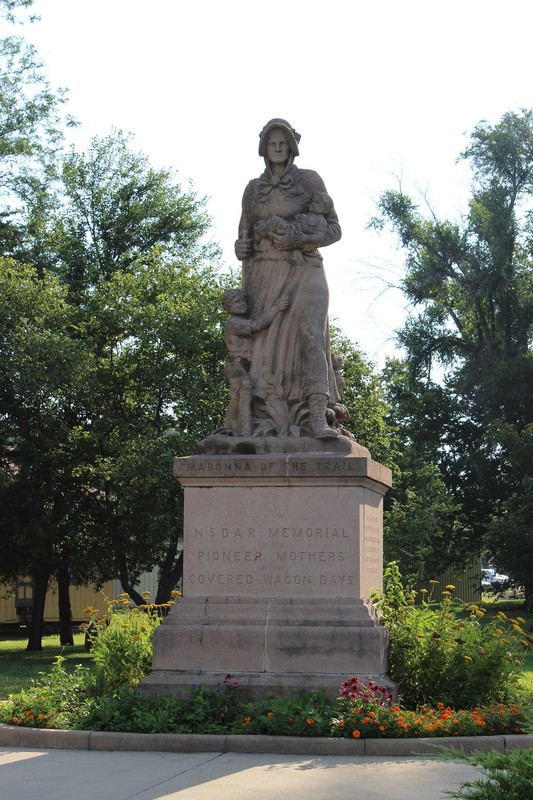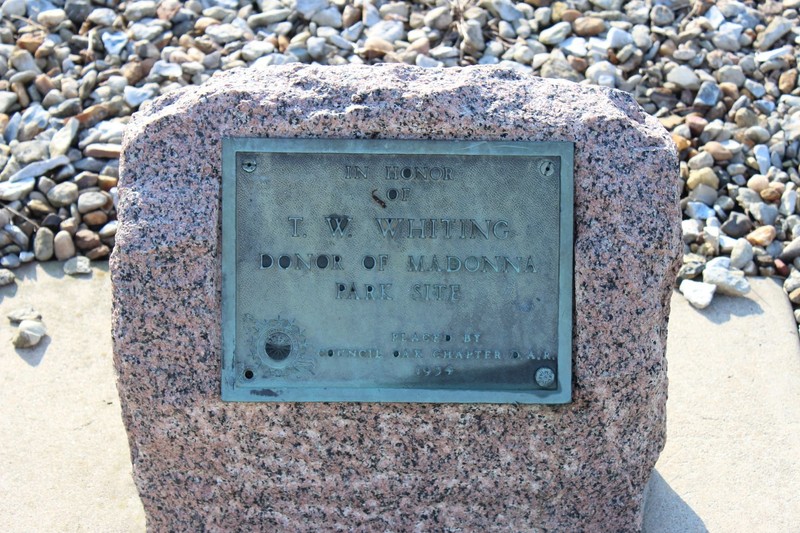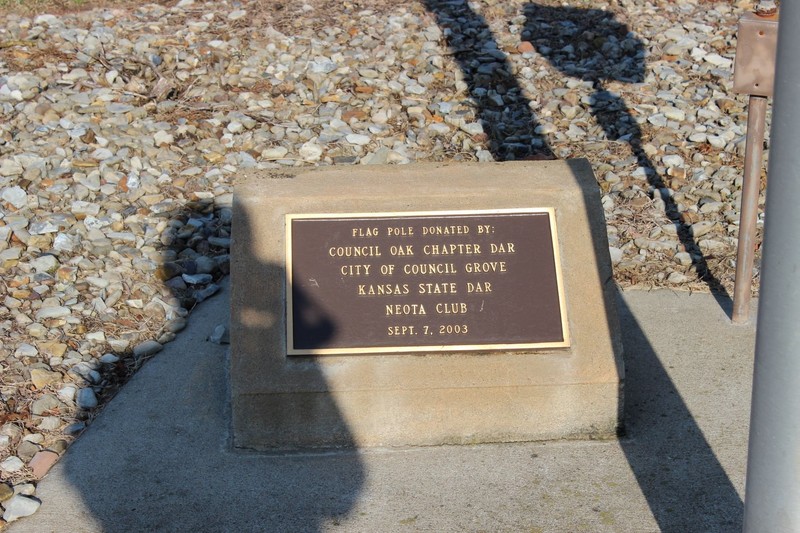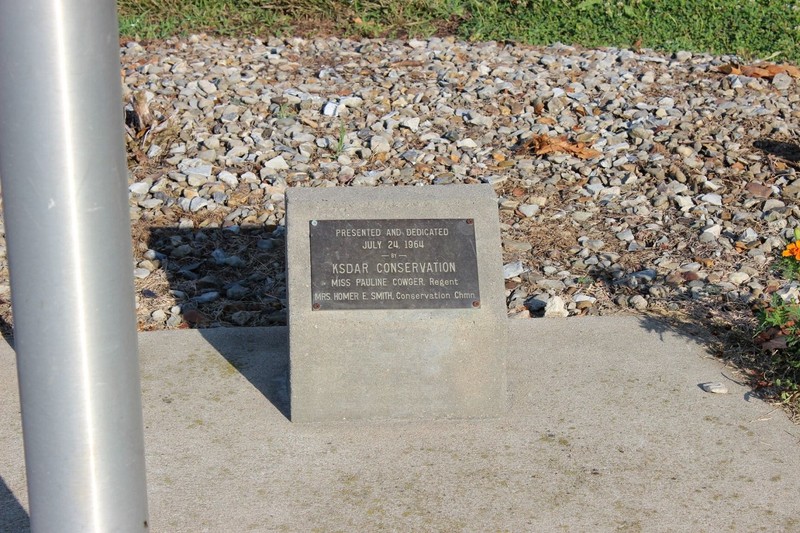Madonna of the Trail (Council Grove, Kansas)
Introduction
Text-to-speech Audio
Images
Madonna of the Trail. Photo by Cynthia Prescott.

Madonna Park plaque. Photo by Cynthia Prescott.

Flag pole plaque. Photo by Cynthia Prescott.

Conservation plaque. Photo by Cynthia Prescott.

Backstory and Context
Text-to-speech Audio
The project began when a group of Missouri women decided to mark the Santa Fe Trail route. In 1911 the National Society, Daughters of the American Revolution (DAR) set out to mark the “Old Trails Road” stretching from Maryland to California. DAR women worked with the National Old Trails Road Association to mark the old Santa Fe Trail and other western migration routes. In keeping with gender norms of that period, the men of the National Old Trails Road Association “handle[d] the basic and practical side of the question,” while the DAR’s national committee “handle[d] the historic and sentimental side.”1 In 1927, Association president (and future U.S. President) Harry S. Truman and President Coolidge received congressional approval for the creation of a national memorial highway stretching from the Atlantic to the Pacific.
Initial plans called for painted mileage markers throughout the route. Inspired by Alice Cooper’s 1905 Sacajawea statue for Portland, Oregon, DAR women abandoned mileage markers in favor of 10-foot-tall pioneer mother statues. Twelve identical statues would be placed in the 12 states through which the “Old Trails Road” passed.
National DAR Commission chairperson Arlene B. Nichols Moss and her artist son worked with architectural sculptor August Leimbach to design the DAR statues. Sculptor August Leimbach envisioned a scene in which she is looking for her husband whom she believes to be in danger.
Each Madonna of the Trail strides purposely westward, dressed in a simple homespun prairie-style gown and wide-brimmed sunbonnet. Like other Pioneer Mother statues erected during the late 1920s, the 12 DAR statues balanced strong, active roles for women with softer maternal symbolism.
The statues were cast from algonite (a form of cast stone produced from a mixture of crushed marble, Missouri granite, stone, cement and lead ore) at the cost of $1,000 per statue. The statues were placed along key white migration routes, such as the early-19th-century National Road (later U.S. Route 40) and Santa Fe Trail (later the infamous Route 66). But the precise location of the monument within each state was selected based on both the site’s historical significance and the influence of local DAR and National Old Trails Association chapters.
The Kansas statue was dedicated September 7, 1928, in what was considered the most historic town on the Santa Fe Trail through Kansas. In 1825, U.S. commissioners signed treaties with representatives of the Osage and Kaw at Council Grove, granting Americans and Mexicans free passage on the Santa Fe Trail. The monument was placed in the former Santa Fe Camp Ground, which was renamed Madonna Park. In the 1960s, the Kansas Society DAR added a flag pole and cement benches beside the statue.
Sources
Daughters of the American Revolution. Twenty-Second Report of the National Society of the Daughters of the American Revolution: March 1, 1918, to March 1, 1919. U.S. Government Printing Office, 1921.
Bartlett, Helen. "The Madonna of the Trail." Daughters of the American Revolution Magazine 103 (1969).
Bauer, Fern Ioula. The Historic Treasure Chest of the Madonna of the Trail, J. McEnaney Printing; Springfield, Ohio, 1984
Medlicott, Carol, and Michael Heffernan. “‘Autograph of a Nation’: The Daughters of the American Revolution and the National Old Trails Road, 1910–1927.” National Identities 6, no. 3 (2004): 233–260.
Prescott, Cynthia Culver. Pioneer Mother Monuments: Constructing Cultural Memory. University of Oklahoma Press, 2019.
